Fantasia 2019, Day 19, Part 1: Full Contact
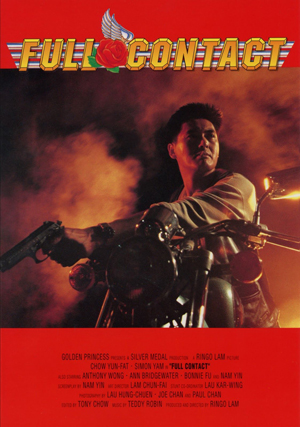 There’s still so much I don’t know about film, so many great movies I haven’t seen. Thankfully, every year Fantasia screens restorations and special presentations of a number of established classics (and semi-classics). I usually don’t have free time in my schedule to watch films I’ve already seen — I had to pass on First Blood to watch Why Don’t You Just Die!, while a presentation of The Crow later in the festival was up against something else — but early on July 29 I had an open spot to take in a film I’d never seen before: a 35mm screening of the 1992 classic by Ringo Lam (Lam Ling-tung) Full Contact. Lam passed away late last year at only 63, and so Fantasia honoured him with a presentation of one of his greatest works.
There’s still so much I don’t know about film, so many great movies I haven’t seen. Thankfully, every year Fantasia screens restorations and special presentations of a number of established classics (and semi-classics). I usually don’t have free time in my schedule to watch films I’ve already seen — I had to pass on First Blood to watch Why Don’t You Just Die!, while a presentation of The Crow later in the festival was up against something else — but early on July 29 I had an open spot to take in a film I’d never seen before: a 35mm screening of the 1992 classic by Ringo Lam (Lam Ling-tung) Full Contact. Lam passed away late last year at only 63, and so Fantasia honoured him with a presentation of one of his greatest works.
Written by Yin Nam, the movie’s about Jeff (Gou Fei in some translations, Ko Fei in others, played in any case by Chow Yun-Fat), a tough bouncer in Bangkok whose friend Sam Sei (Anthony Wong) went into debt to a loan shark to pay for Jeff’s mother’s burial. To pay off the debt, they decide to embark on a heist alongside Sam’s cousin Judge (Simon Yam). Judge has other plans. He betrays Jeff, and leaves him for dead. But Jeff survives, and as Sam rises in the underworld, Jeff returns seeking revenge.
And revenge he shall have. Full Contact is one of the late apotheoses of the 80s action movie, filled with snarling attitude and brutal gunfights. There’s a heft to the violence, a weight that comes only in part from the lack of CGI. Mostly it comes from acting and directing and writing. You feel anything can happen to any character at any time. Or at least anything imaginable in 1992; the film’s solidly of its time, to the point of opening with a dance sequence set to Extreme’s “Get the Funk Out.” Which, somehow, impossibly, works.
The movie moves well, building to set-pieces that send the plot off in unpredictable directions. The heist, for example, is the kind of action sequence other movies might make their grand climax. Here it’s more like the end of a long first act, twisting the story to set up the rest of the film. But the point is that it has its own logic and its own structure, with a car chase and a running gun fight and then a siege of a man pinned down inside a house. All of it’s clear, all of it fun to watch, and yet also oddly realistic; the gang’s small, and the violence is on a matching scale.
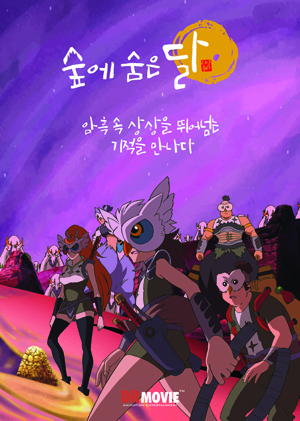 My second film of July 28 screened at the De Sève Cinema. It was an animated film from Korea with a Japanese director, Takahiro Umehara, and it was stunning. Watching early scenes of The Moon in the Hidden Woods (Sup-e Sum-eun Dal, 숲에 숨은 달) I wondered where the movie could go from its opening act — it had already shown us a major city, fights, desert nomads, monsters, a wild variety of costumes and architecture and technologies and designs. Surely, I thought, it would have to slow down. It did; and then built back up again.
My second film of July 28 screened at the De Sève Cinema. It was an animated film from Korea with a Japanese director, Takahiro Umehara, and it was stunning. Watching early scenes of The Moon in the Hidden Woods (Sup-e Sum-eun Dal, 숲에 숨은 달) I wondered where the movie could go from its opening act — it had already shown us a major city, fights, desert nomads, monsters, a wild variety of costumes and architecture and technologies and designs. Surely, I thought, it would have to slow down. It did; and then built back up again.  My first movie on July 28 was one of my most-anticipated of the festival. In 2017 I watched
My first movie on July 28 was one of my most-anticipated of the festival. In 2017 I watched  For my last movie of July 27 I crossed the street to the De Sève Cinema to take in the French-Swiss co-production Les Particules (The Particles). It’s the first fiction feature by director Blaise Harrison, who co-wrote the script with Mariette Désert. After a day of particularly frenetic movies, this was good way to end the evening; a subtler, atmospheric, intelligent, and character-based film that thoroughly succeeded at what it was trying to do.
For my last movie of July 27 I crossed the street to the De Sève Cinema to take in the French-Swiss co-production Les Particules (The Particles). It’s the first fiction feature by director Blaise Harrison, who co-wrote the script with Mariette Désert. After a day of particularly frenetic movies, this was good way to end the evening; a subtler, atmospheric, intelligent, and character-based film that thoroughly succeeded at what it was trying to do.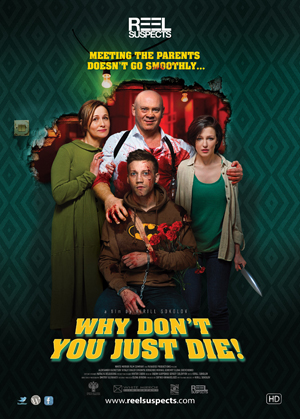 My fourth film of July 27 was once again in the Hall Theatre. It was a Russian film about which I had heard very good things, with one web site calling it among the best action movies of the year so far. You may have heard of Chekhov’s gun; well, Why Don’t You Just Die! (Papa, Sdokhni) gives us Chekhov’s gun, along with Chekhov’s other gun, Chekhov’s claw hammer, Chekhov’s power drill, Chekhov’s CRT TV, and any number of Chekhov’s other odds and ends.
My fourth film of July 27 was once again in the Hall Theatre. It was a Russian film about which I had heard very good things, with one web site calling it among the best action movies of the year so far. You may have heard of Chekhov’s gun; well, Why Don’t You Just Die! (Papa, Sdokhni) gives us Chekhov’s gun, along with Chekhov’s other gun, Chekhov’s claw hammer, Chekhov’s power drill, Chekhov’s CRT TV, and any number of Chekhov’s other odds and ends. 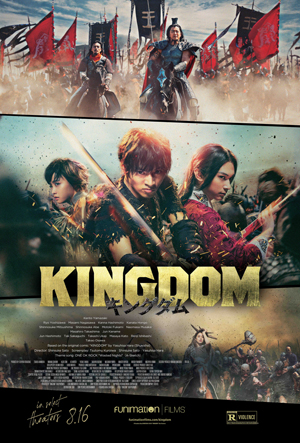 My third movie of July 27 was a live-action manga adaptation by the dauntless and prolific
My third movie of July 27 was a live-action manga adaptation by the dauntless and prolific 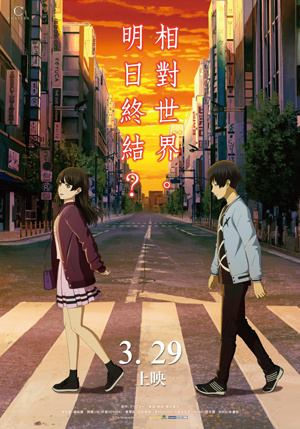 For my second film of July 27 I stuck around the Hall Theatre for another animated feature, this time from Japan. Preceding it was a 13-minute animated short from Canada.
For my second film of July 27 I stuck around the Hall Theatre for another animated feature, this time from Japan. Preceding it was a 13-minute animated short from Canada. Saturday, July 27, was going to be a long day for me at Fantasia. Hopefully a good one, too. I had five movies on my schedule, starting at noon with the animated Chinese fantasy-adventure White Snake (白蛇:缘起, 白蛇:緣起).
Saturday, July 27, was going to be a long day for me at Fantasia. Hopefully a good one, too. I had five movies on my schedule, starting at noon with the animated Chinese fantasy-adventure White Snake (白蛇:缘起, 白蛇:緣起).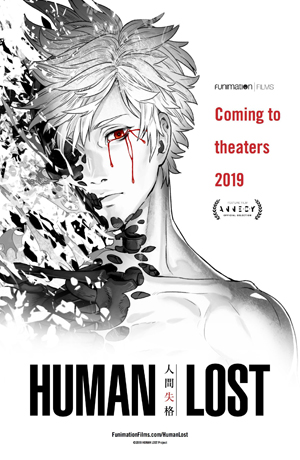 My second film of July 26 was in the big Hall theatre, a science-fiction anime called Human Lost (人間失格). Directed by Fuminori Kizaki, it was scripted by Tou Ubukata based on a novel by Osamu Dazai. The movie’s set in 2036, when advanced nanotechnology has given human beings a lifespan of 120 years but turned Japan into a deeply unequal society, with the wealthy sequestered inside a vast citadel called “the Inside.” Some people, for unclear reasons, metamorphose into monsters: the ‘Human Lost’ phenomenon. A troubled young artist, Yozo Oba (Mamoru Miyano), gets involved with his cyborg friend Takeichi (Jun Fukuyama) when he attempts to break into the Inside, and sets off a complex series of events which bring to light the truth about the Human Lost problem and the future of 2036 — but which also might drive Yozo over the edge of sanity.
My second film of July 26 was in the big Hall theatre, a science-fiction anime called Human Lost (人間失格). Directed by Fuminori Kizaki, it was scripted by Tou Ubukata based on a novel by Osamu Dazai. The movie’s set in 2036, when advanced nanotechnology has given human beings a lifespan of 120 years but turned Japan into a deeply unequal society, with the wealthy sequestered inside a vast citadel called “the Inside.” Some people, for unclear reasons, metamorphose into monsters: the ‘Human Lost’ phenomenon. A troubled young artist, Yozo Oba (Mamoru Miyano), gets involved with his cyborg friend Takeichi (Jun Fukuyama) when he attempts to break into the Inside, and sets off a complex series of events which bring to light the truth about the Human Lost problem and the future of 2036 — but which also might drive Yozo over the edge of sanity.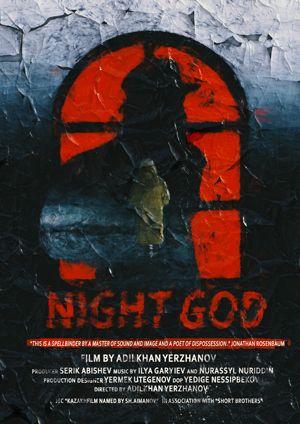 My first film on Friday, July 26, was a Kazakh work playing at the de Sève Cinema. Written and directed by Adilkhan Yerzhanov, Night God is a particular sort of uncompromising. It’s a beautiful picture, but extremely slow, still, and self-consciously meditative. I was deeply moved, for all its studied avoidance of simple dramatic action.
My first film on Friday, July 26, was a Kazakh work playing at the de Sève Cinema. Written and directed by Adilkhan Yerzhanov, Night God is a particular sort of uncompromising. It’s a beautiful picture, but extremely slow, still, and self-consciously meditative. I was deeply moved, for all its studied avoidance of simple dramatic action.